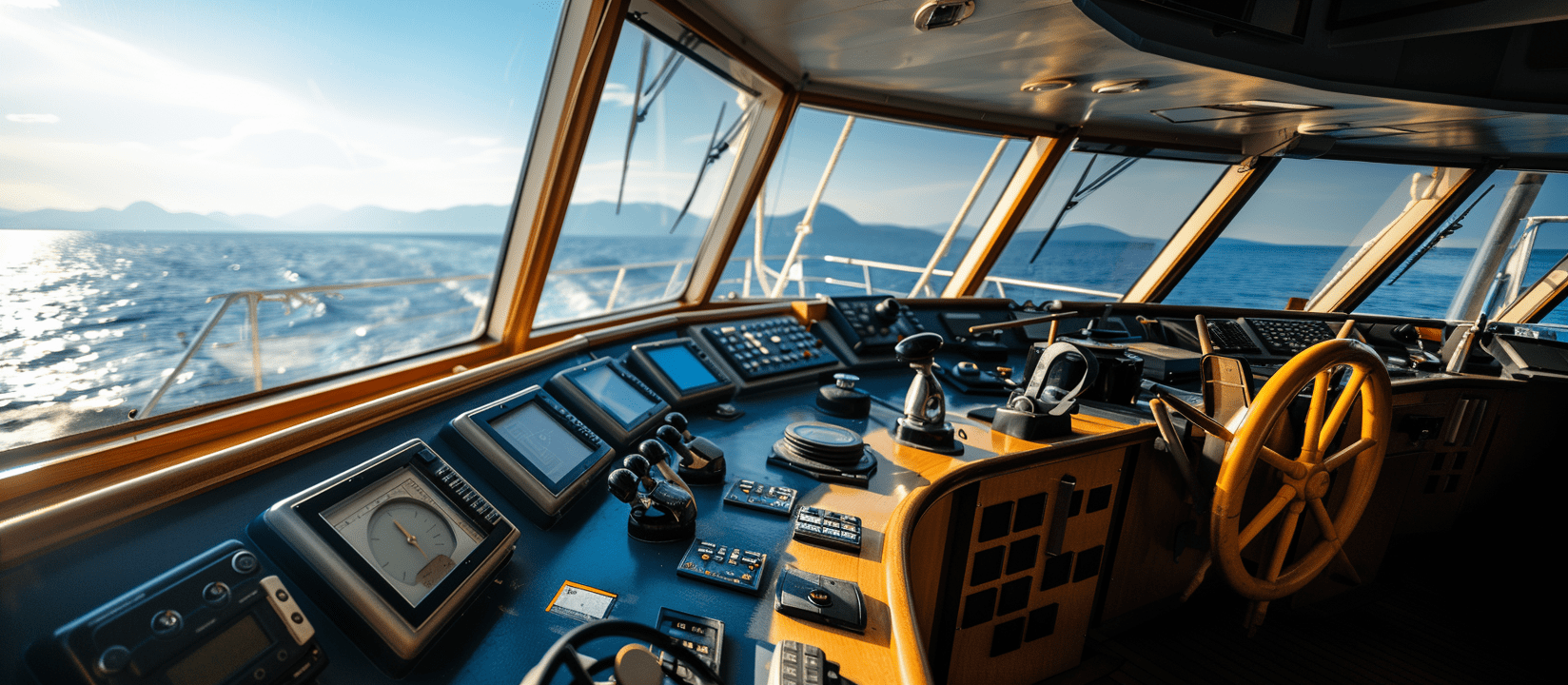When you step onto the bridge of a ship, you enter a domain where precision and functionality converge to orchestrate the intricate dance of maritime travel. The design and layout of this essential space are not merely aesthetic choices but strategic decisions that hold the key to seamless navigation and operational success. Imagine a world where every element is meticulously placed to guarantee peak performance and safety. Curious to explore how these design nuances shape the very essence of seafaring efficiency and crew coordination?
Importance of Bridge Design
When considering the design of a ship’s bridge, it’s imperative to acknowledge the vital role it plays in guaranteeing the safe navigation and operation of the vessel. The bridge serves as the nerve center of the ship, where decisions are made, and commands are executed.
A well-designed bridge enhances user experience by providing a clear layout that facilitates efficient communication and decision-making.
Navigational aids are essential components of the bridge design. These include radar systems, GPS displays, electronic charting systems, and communication equipment.
These aids provide critical information to the crew, allowing them to navigate safely through various weather conditions and busy waterways. The placement and integration of these navigational aids are key considerations in the design process to guarantee they’re easily accessible and visible to the operators.
Ergonomics in Bridge Layout
To optimize the efficiency and functionality of a ship’s bridge, the ergonomic layout is of utmost importance. When designing the bridge layout, considerations must be made to guarantee a user-friendly interface and a clear visual hierarchy.
The user interface should be intuitive, with controls and displays positioned ergonomically to facilitate easy operation. Key instruments and controls should be placed within easy reach, allowing the crew to navigate the ship effectively.
Visual hierarchy plays an essential role in the bridge layout as well. Important information, such as navigational data and alerts, should be displayed prominently and clearly to guarantee quick comprehension.
Color coding and grouping of information can help establish a visual hierarchy, guiding the crew’s attention to the most critical elements on the bridge.
Technology Integration in Bridge
How can technology integration enhance the efficiency and capabilities of a ship’s bridge? By incorporating advanced navigation systems and intuitive control interfaces, the bridge becomes a hub of sophisticated operations.
Navigation systems such as ECDIS (Electronic Chart Display and Information System) offer real-time data on charts, routes, and potential hazards, streamlining decision-making processes. Radar and AIS (Automatic Identification System) integration provide extensive vessel tracking and collision avoidance capabilities.
Control interfaces on modern bridges are designed for seamless interaction, allowing operators to effortlessly manage propulsion, steering, and communication systems.
Touchscreen displays offer customizable layouts for quick access to critical information, enhancing situational awareness. Integration of autopilot systems and dynamic positioning technology further automate vessel control, optimizing efficiency and reducing human error.
Safety Features on the Bridge
Enhancing safety on the bridge is paramount for ensuring smooth operations and protecting both crew members and the vessel. To achieve this, several key safety features are incorporated into the design and layout of the bridge:
- Navigation Aids: Advanced radar systems, GPS technology, and electronic chart displays help the crew navigate safely through various waterways, avoiding collisions and hazards.
- Visibility Considerations: Large windows and strategically placed mirrors provide ideal visibility to the crew, ensuring they’ve a clear view of the surroundings at all times.
- Emergency Protocols: Emergency alarms, firefighting equipment, and life-saving appliances are easily accessible on the bridge, enabling quick responses in case of emergencies.
- Equipment Placement: Essential equipment such as communication devices, steering controls, and engine monitoring systems are strategically placed for easy access and efficient operation during critical situations.
Crew Collaboration and Communication
The efficient collaboration and seamless communication among crew members on the bridge are critical components that contribute to the safe and effective operation of the vessel.
Crew dynamics play an essential role in ensuring that tasks are executed smoothly and that decisions are made promptly. Effective communication tools are crucial for maintaining situational awareness and coordinating actions on the bridge.
Clear communication channels, such as radios, intercom systems, and alarms, facilitate the exchange of information between team members. These tools enable swift responses to changing conditions and emergencies.
Additionally, communication protocols and procedures help establish a structured framework for conveying essential information and ensuring that all crew members are on the same page.
Teamwork and collaboration foster a positive working environment on the bridge, enhancing efficiency and reducing the likelihood of errors.
Frequently Asked Questions
How Does Weather Affect the Design of a Ship’s Bridge?
When considering weather’s impact on a ship’s bridge design, visibility considerations are essential. Ergonomic design must also account for potential weather challenges. These factors guarantee ideal performance and safety in varying conditions, enhancing overall operational efficiency.
What Training Is Required for Personnel Operating the Bridge?
To operate the bridge effectively, bridge personnel undergo rigorous navigation training. This training covers various aspects such as chart reading, radar operation, communication protocols, collision avoidance strategies, and emergency procedures to guarantee safe navigation at sea.
Can the Design of the Bridge Impact a Ship’s Fuel Efficiency?
Yes, the design of the bridge can impact a ship’s fuel efficiency. Incorporating aerodynamic features and modern navigation technology can reduce wind resistance and optimize routes, leading to improved fuel consumption, making it a critical consideration for ship designers.
How Are Emergency Situations Handled on the Bridge?
In emergency situations on the bridge, protocols dictate swift actions. Crew communication is key to executing response plans effectively. Training guarantees readiness. Alarms trigger immediate responses. Clear roles and responsibilities streamline coordination, enhancing safety and minimizing risks.
Are There Regulations Governing the Layout of a Ship’s Bridge?
Regulations govern a ship’s bridge layout to guarantee ideal bridge ergonomics and integration of navigation technology. Design considerations focus on efficient communication, clear visibility, and access to essential controls. Compliance enhances safety and operational effectiveness.






